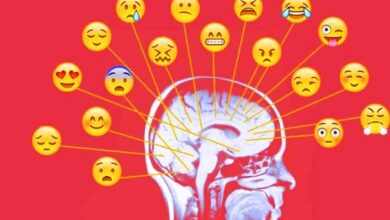What is Intrinsic motivation historical review and extrinsic promotion
Intrinsic motivation
When talking about motivation, and in particular about intrinsic motivation, the first thing we ask ourselves is: what makes people act the way they do? What makes a person persist in achieving a goal (such as approving oppositions), despite the pain and effort it entails? Why are people able to persist with a task and others put it off or start it instead? others at the same time without finishing any of them?
The study of intrinsic motivation is a topic of basic psychology . We know that human beings act for reasons: to get what they need (food, money, prestige…) or to avoid what they fear (obstacles, illnesses, punishments…). In this article, we will try to figure out what it is and why it is so important.
More about Intrinsic motivation
Intrinsic motivation originates in the individual and is driven by the needs for exploration, experimentation, curiosity and manipulation, considered motivating behaviors in themselves. In other words, intrinsic motivation is the type of motivation that is self-managed and that predisposes an individual to strive toward achieving a goal.
Intrinsic motivation, according to Deci, is an underlying need in the individual for social competence and self-determination . That is, those behaviors that are performed in the absence of any apparent external contingency are considered intrinsically motivated. Carrying out the activity is an end in itself and allows the subject to feel autonomous and competent, fundamental for the proper development of healthy self-esteem
We can all give an example of intrinsic motivation in our lives: participating in volunteering, altruistic acts, doing our job well, seeking more knowledge, self-improvement in performing a sport, pursuing hobbies…
In summary, the motives that lead to the activation of a behavioral pattern are inherent to the person. External stimuli are not required as in extrinsic motivation, but they are not mutually exclusive. That is, you can perform an intrinsically motivated activity (helping others) but also get an external reward (money).
Unlike what is achieved with extrinsic motivation (external rewards), with intrinsic motivation, we obtain experiences, feelings of efficiency and mastery of the task . Generally, three related feelings appear:
- Self-determination and autonomy : being the directors of our own lives.
- The competition : control what we do, experience mastery of our skills.
- Relationships : interacting, being connected, and caring for others.
- Satisfaction from doing something suitable and familiar
At first, it was thought that both types of motivation were independent, but Deci and Lepper showed that an activity that had a high intrinsic interest could be diminished if rewards were introduced, which they called the super justification effect. Interestingly, the subject lost interest. The negative effect of the reward is known as the hidden price of the reward.
Brief historical review of intrinsic motivation
To understand where the psychological construct of intrinsic motivation comes from, it is important to know what are the origins of this concept linked to the mental processes linked to what motivates us . These go back to times when there wasn’t even psychology as a science.
Motivation has always been an object of presence. Plato already spoke of anger, courage, instincts, Aristotle mentioned goals, Epicurus concentrated on the pursuit of pleasure and the avoidance of pain.
Since the foundation of Scientific Psychology, we will remember McDougall (1908), who resorted to instincts as an explanation of behavior, for Freud (1910) with unconscious motivation. Although Watson and Skinner‘s behaviorism does not deal with this subject, as they understand learning as the only motor of action, even neoconductism by Clark Hull (1943) sees that learning is not enough to execute a behavior.
It is not until the theories of personal causation in the 1970’s (De Charms) and the theory of self-determination in the 1980’s (Deci and Ryan) that one begins to talk about intrinsic motivation.
What is the best motivation, intrinsic or extrinsic?
We must clarify that no extrinsic or intrinsic motivation is “bad” by itself, but it will depend on what is present in each person’s life, their context and their psychological and personal situation.
Extrinsic motivation is driven from the outside, either by the strength of the reward or the strength of a possible punishment (for example, the student who starts studying the night before for fear of suspension and having to pay a higher academic credit fee).
In these cases, the subject may find himself doing something he doesn’t like simply for the reward (think of all those who do work that doesn’t intrinsically motivate them for the economic reward). This type of motivation is available throughout society, even the education system is extrinsically motivated . The great disadvantage of this motivation is that it cannot satisfy the need for self-determination.
Therefore, it is necessary to develop and change from the extrinsic to the intrinsic, which is possible, making the subject reach levels of autonomy in the task he performs and offering a context or environment that facilitates interpersonal relationships.
A very clear example of this last reflection is to start educating children, promoting their autonomy and self-realization through the process itself (the intrinsic one), instead of focusing only on extrinsic rewards / punishments for accomplishing tasks. This is not so easy: when performing activities and starting them, extrinsic motivation is often needed to start routines, especially in children . However, once started and incorporated into the subject’s routine, they would be maintained by intrinsic motivation.
Thanks to psychology, it is known that, when motivation comes from within, it is capable of making us tend to persevere in the task for longer; That’s why it’s so important to encourage him in processes such as studies, competitions or high-performance athletes. This is so, among other things, because being intrinsic does not depend too much on the situations that arise around us and helps us to adapt to each situation and each obstacle.
On the other hand, we must bear in mind that there is no “pure” intrinsic motivation , as it is always linked to events that occur around us. The fact that it is more useful to understand it as an element that occurs in the individual, and not as something that comes from outside, does not mean that the individual’s practice and environment are closely related.
How is this type of motivation promoted?
We will base ourselves fundamentally on what Deci and Ryan’s theory of self-determination proposes. One of the fundamental goals of moving from the extrinsic to the intrinsic is to focus on satisfying our needs for autonomy and self-determination.
In the workplace, thinking in terms of “I have to”, “I should do…” leads us to feel overwhelmed, pressured and we feel that we are full of imposed “must do” tasks. We feel tied down, and even though we get paid for these activities (which promote extrinsic motivation), it might not be enough to make us feel good.
It’s positive to try to put aside the “I have and need” backpack and start thinking about the “I want”. When we think about what we want to do, we are satisfying our needs for autonomy and self-determination. Today at my job: Do I want to feel like I’ve contributed something positive? Want to feel like I helped someone else? Do I want to feel satisfied with the effort I’ve made? Do I want to learn new things?
So we can ask ourselves: “to get what I want to do, what can I do to get it?” When we consider what we can do, we are encouraging the need to feel competent and in control of what we do, and we are putting ourselves in the driver’s seat of our lives. It is in our hands to choose to do our job well, help someone else, look for more information to learn a little more …
Obviously, not in all situations, we will be able to apply this change of perspective, but it can be useful to reflect on why we do things and how we can change those that do not feel good and are changeable.




